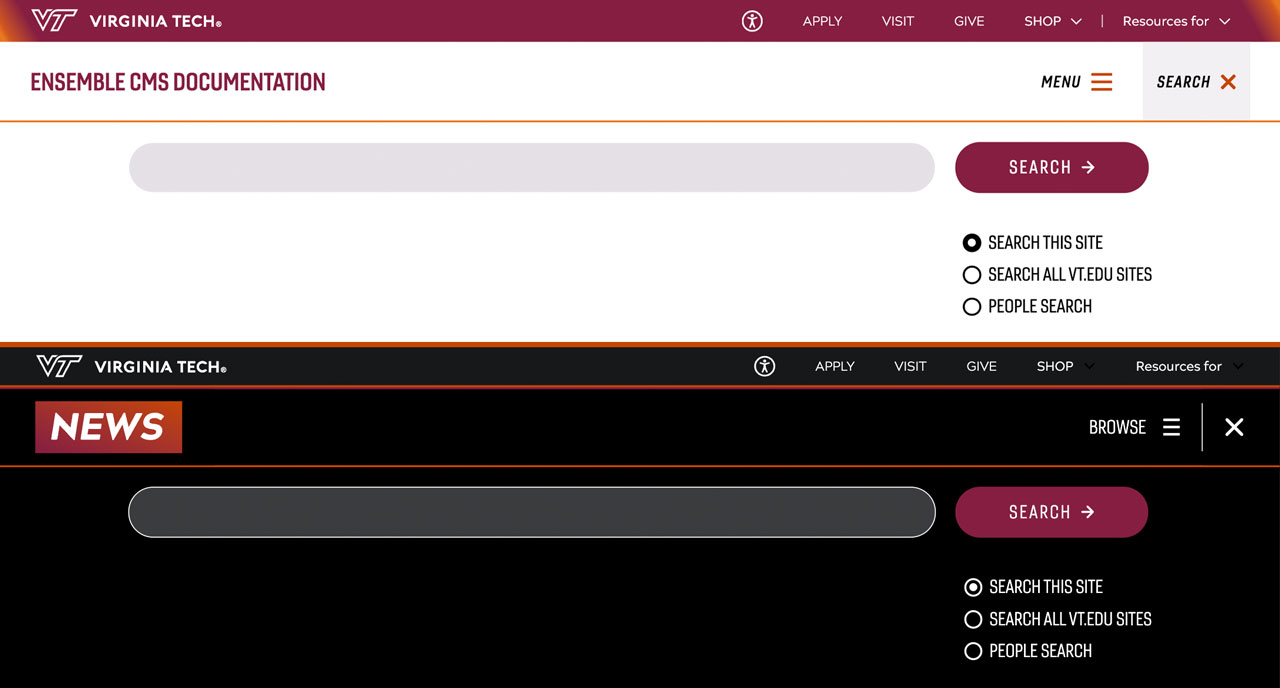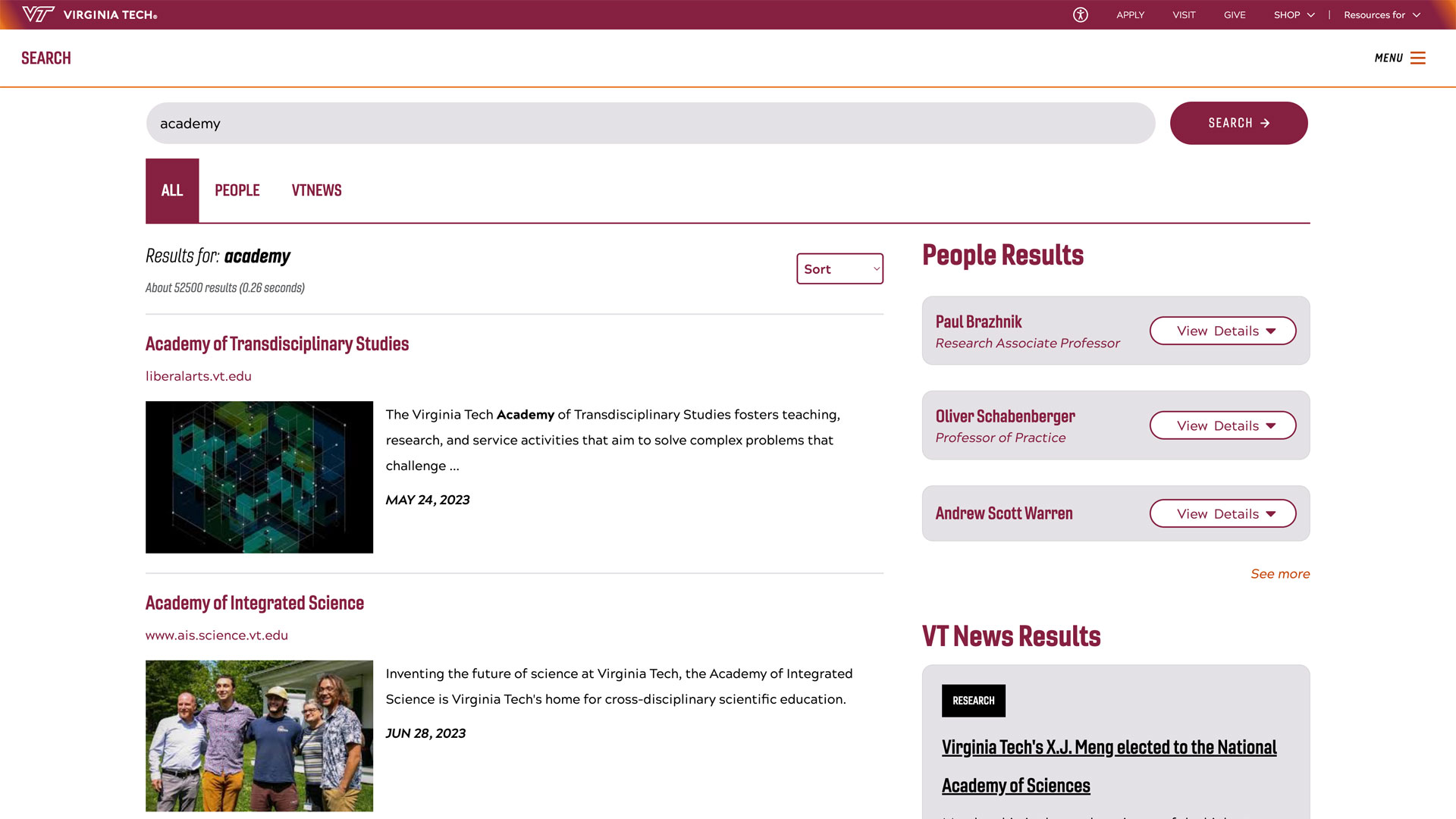More than just support: Veterinary technicians play critical role in care

Behind every great veterinarian stands strong support — the most unsung of heroes, the licensed veterinary technician (LVT).
Often misunderstood or even overlooked, LVTs play an indispensable role within the team of veterinary professionals, and also in the education of the next generation of veterinarians.
“The LVTs at our school are nothing short of extraordinary," said Christa Clark, a Class of 2026 student at the Virginia-Maryland College of Veterinary Medicine. “Every single one I have encountered has been so supportive of students and encouraging when we look like fools trying to learn new things. Each of the techs went out on their way to not only make students comfortable, but to teach us what we struggled with. You could ask any one of them to show you something and they would have such a knowledgeable and easy to comprehend answer.”
LVTs are professionals who chose to go to an American Veterinary Medical Association-accredited technician school and then sit for a national licensing exam administered by the American Association of Veterinary State Boards. They can even specialize much like veterinarians can.
These programs ensure they are prepared to function in all capacities needed in veterinary medicine, except for diagnosing, prescribing, or performing surgery, which are exclusively reserved for veterinarians.
Despite LVTs’ wide breadth of skills and vital importance to the profession of veterinary medicine, many people are unaware of the role they play both in and out of clinic.
Outside of the Veterinary Teaching Hospital (VTH), Andrea Collins, an LVT for 24 years who works as lab support and director of the MDL labs here at the college, is responsible for organizing and communicating with faculty and students for logistics, providing instructional support in labs, and oversight of animal care for education which includes the teaching cattle and horses.
She didn’t want to go to school for as long as veterinarians do but had a strong passion for animals and fell in love with teaching.
“LVTs care and are passionate about what we do. Unfortunately, the hard work of LVTs is often overlooked, and our efforts behind the scenes are taken for granted.” Collins said. “We are jacks of all trades and can do so much. I live for the light bulb moments when students finally have something click in their brain.”
Lauren Scaletta, an LVT for 12 years and the clinical skills manager and lab support technician, helps to maintain school models and provides support to students when they are studying in the lab. She always knew she wanted to be hands-on, although she didn’t always know about the profession.


“LVTs are a large asset because the license is a proper and standardized form of training, which allows us to be better and more confident in our jobs,” Scaletta said. “I enjoy teaching new techniques to students because not everyone comes from veterinary background and not everyone is comfortable, so I try to help bridge the gap.”
Within the teaching hospital, LVTs play numerous roles, and many are even specialty trained — similar to how veterinarians can specialize in areas of care.
Maureen Sroufe, an LVT for 27 years who specializes in neurology, stumbled upon the profession when she didn’t want to go to school to be a veterinarian but also didn’t want to do dog grooming and was looking for another profession within the sphere.
“Being a good LVT is assisting the doctors and helping them to better do their jobs so they can focus on the things that LVTs cannot legally do,” Sroufe said. “It’s frustrating when technicians are underutilized.”
Flori Bliss, an LVT who is now an assistant professor of practice and chief of small animal physical rehabilitation, is primarily involved in patient care. She doesn’t have an official rotation for students to come through like the other specialties in the hospital, but still often has students come to her for learning and mentoring.
“I love the individual experience and being able to be hands-on with the students,” Bliss said. “I enjoy my role specifically because I get to fill in some gaps for them in a more relaxed environment.”
Missy Stillinger, a senior anesthesia technician who has been an LVT for 26 years, was encouraged to go to technician school by a veterinarian because she was learning so quickly and constantly looking for new challenges.
“LVTs play a pivotal role in veterinary student education,” Stillinger said. “LVTs can pivot so the students can get more out of their experiences, for example passing off placing a catheter to a student who needs more practice or taking over monitoring while a student learns something else.”
Mia Damiano, Class of 2026 student, agrees on what a vital role LVTs play in student education.
“There are not enough words to describe how impactful they have been on my education,” Damiano said. “Working with the LVTs has not only allowed me to refine my skills in a safe and encouraging environment, but it has also provided me with several amazing role models. As a student doctor, it is very common to have imposter syndrome and feelings of inadequacy as you learn, but everyone has always treated me like family.”
Despite all of this, LVTs remain widely unrecognized among the general population.
None of the LVTs interviewed knew what an LVT was growing up and had to be guided into the position they now cherish so much.
This lack of recognition poses a serious concern. Given their importance, and the ever-growing need for LVTs, it is imperative for the profession to become better known and better understood.
Terry Wnorowski, a longtime anesthesia/ophthalmology LVT now in the role of onboarding and training coordinator and tech liaison, is doing her best to champion that both in and out of the teaching hospital with her 34 years of experience.
She is working on a campaign to help clients, and the general public better understand what LVTs do and why they are important in patient care, but she is also working with the community and doing outreach at local high schools to introduce the profession to a younger audience and hopefully encourage them to enter the field.
“LVT's possess many critical skills, but the majority of people don’t understand what the role is because the name ‘technician’ is too broad,” Wnorowski said. “Our role is a great combination of medical education and hands-on work.”
Many LVTs would support a title change that more clearly described their role such as “veterinary nurse” as well as salaries that reflect their level of training and expertise.
Turnover is an immense problem within the field due to low salaries and lack of appreciation which can have detrimental effects on patient care. The AVMA noted that the ratio of LVTs to DVMs in practice should be 3:1.
Without a doubt, technicians are crucial to student success and veterinarian success. It is imperative they become better recognized, supported, and utilized.




